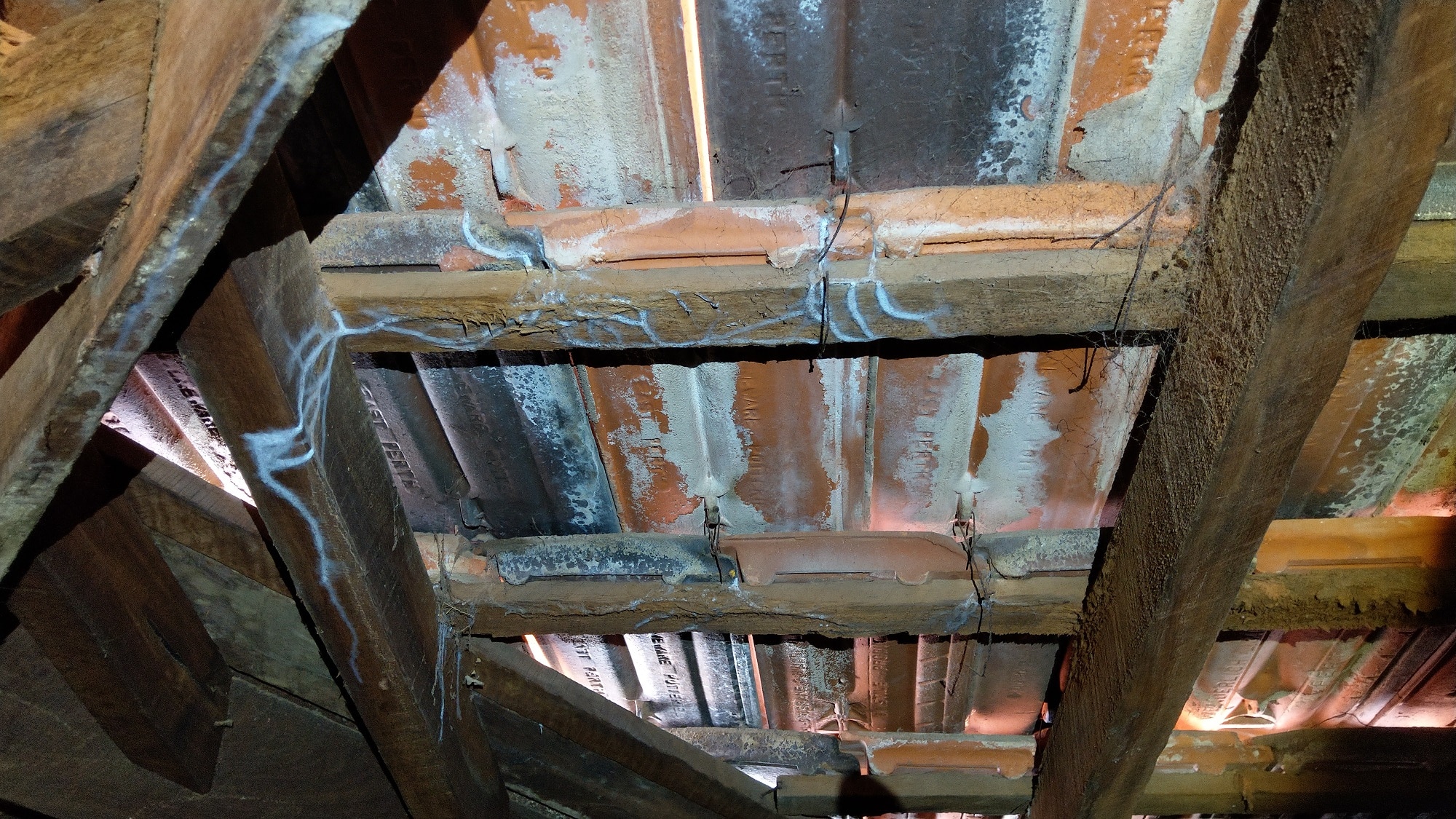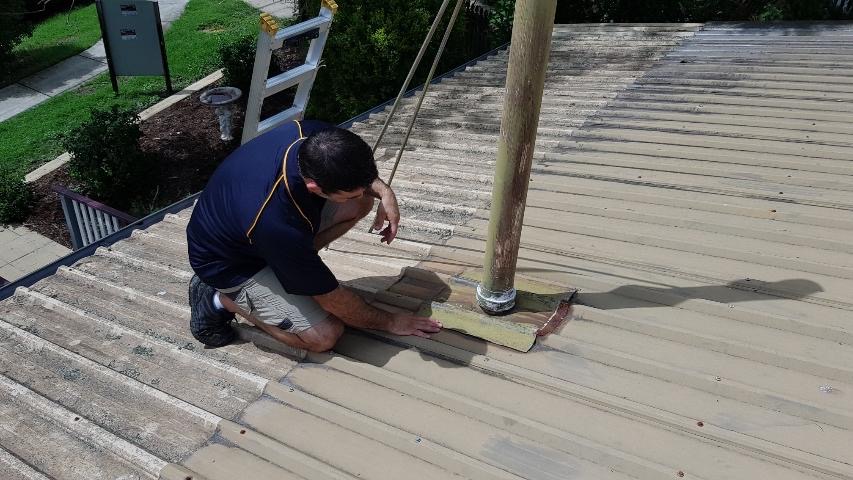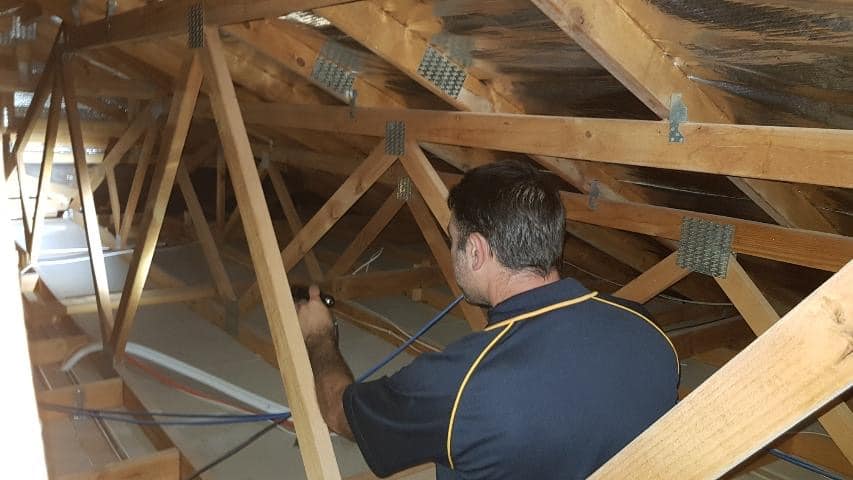
Chemical delignification is a process that damages timber in metal and concrete tiled roofs, especially in coastal areas and places with high pollution levels. This insidious process, also known as defibrosis or ‘hairy timber’, compromises the structural integrity of roofs, and can render them unsafe for even a single footstep.
In this guide, we’ll look at what causes chemical delignification, prevention strategies, identification techniques, and expert management approaches to ensure the safety of occupants and the integrity of your property. We’ll also discuss the implications for property owners and the importance of seeking professional expertise to mitigate this destructive process.
What is Chemical Delignification?
Chemical delignification of tile battens is a process that affects the structural integrity of timber, leading to a hairy or frayed appearance on the surface. Despite its impact, many are unfamiliar with this term, which was previously known as defibrosis or “hairy timber.”
To understand this chemical process, it’s essential to know about lignin, a vital organic polymer found in plant tissues and some algae.
Lignin in Chemical Delignification
Lignin provides rigidity and strength to timber by filling the spaces within a plant’s cell walls. However, it’s not indestructible and can be damaged by fungi, insects, and environmental factors.
When lignin is destroyed or damaged, the timber fibers separate, resulting in a hairy appearance. This deterioration leads to a loss of structural integrity over time. Chemical delignification is more likely to occur in areas exposed to salt water, industrial pollutants, or heavy traffic, as these environments provide the necessary conditions for the process to take hold.
In coastal regions, wind-borne salt can travel far inland, settling on rooftops and initiating the delignification process. Similarly, chemicals and pollutants in the air can also contribute to this effect, causing damage to timber. It’s important to understand that while fungi and insects also degrade timber, chemical delignification is a distinct process caused by acid hydrolysis rather than biological action. Understanding chemical delignification is crucial for maintaining the structural integrity of buildings and preventing costly repairs.
Also read: Chemical Delignification: Causes & Treatment

Where Can You Find Chemical Delignification?
Chemical delignification typically affects building materials, particularly timber components, rather than occurring naturally. It commonly appears in roof structures comprising timber battens that support terracotta tiles.
In these areas, chemical delignification damage often manifests, especially in the roof tile battens. The efflorescence from the terracotta tiles can also trigger chemical delignification in the timber elements, leading to structural issues. As a result, chemical delignification is a significant concern in building maintenance, especially in coastal regions.
The phenomenon typically affects the thin timber pieces known as timber roof battens in a house’s roof. However, it can also occur in other timber components, such as rafters, beams, and ceiling joists. Due to their size and location, roof battens are more susceptible to chemical delignification, making them vulnerable to airborne attacks. Some timber species, such as Radiata Pine, are known to be more susceptible to this process due to their specific lignin and cellulose structure.
What Causes Chemical Delignification?
Chemical delignification can be caused by various forms of airborne chemical attacks on timber, including:
- Sea salt: In coastal areas, airborne salt (NaCl) combines with moisture to form hydrochloric acid (HCl) via a process called acid hydrolysis, which directly breaks down the lignin. This makes timber in houses with terracotta roof tiles particularly vulnerable.
- High pollution: Areas with high levels of pollution, such as industrial areas or main roads, can contain sulfur and nitrogen oxides (SOx and NOx) from vehicle emissions and industry. These compounds react with water to form sulfuric acid (H2SO4) and nitric acid (HNO3), which are highly corrosive to timber.
- Release of gas: Gases from household appliances or hot water systems in the roof can accelerate chemical delignification by creating a humid and chemically reactive environment.
- Moisture: High levels of moisture in the roof cavity are a key contributor because it’s the water that facilitates the chemical reactions that form the acids which attack the lignin.
- Inadequate ventilation: Poor ventilation in the roof cavity can lead to a build-up of moisture and chemicals, increasing the risk of chemical delignification. Improved ventilation prevents this by allowing these corrosive compounds to dissipate, reducing the concentration of the acidic reactants.
When is Chemical Delignification a Structural Defect?
Chemical delignification is considered a structural defect when it reduces the strength of the timber. As a part of a pre-purchase building inspections or timber pest inspections, chemical delignification is listed as an example of structural defects under AS 4349.1.
If left untreated, chemical delignification can lead to the destruction of timber roof components, causing deterioration and potential collapse. The process can spread quickly, affecting multiple structural elements and requiring costly repairs. In severe cases, the entire roof may need to be replaced.


Spotting and Managing Delignification
Chemical delignification can be identified by a professional inspector or roofer. The severity is typically graded from a light “hairy” appearance to a brittle, “sugary” texture where the timber crumbles easily. Signs include:
- Discolouration or staining on the timber surface
- Weakening or collapse of timber components
- Presence of salt or other chemicals in the timber
- Hairy or fuzzy appearance on the timber surface
- Cracks or splits in the timber
Is Chemical Delignification Preventable?
While it may not be possible to completely prevent chemical delignification, measures can be taken to reduce its likelihood. Using products like pale boiled linseed oil to seal roof battens can help extend their lifespan.
Linseed oil and other protective sealants work by creating a physical barrier on the timber surface, preventing the penetration of moisture and acidic compounds. Other treatments include borate-based preservatives, which can offer long-term protection against both chemical and biological decay.
In severe cases, replacement of the affected structure may be necessary, which can be costly. Therefore, prevention is the best defence against chemical delignification. If you suspect timber deterioration in your existing property or plan to purchase a new one, it is essential to hire a certified building inspector to conduct a thorough inspection and identify any defects.
Proactive measures and regular inspections can help prevent costly repairs and ensure the structural integrity of your property. Regular inspections and maintenance are crucial in identifying potential issues before they become major problems. Some ways to minimise the risk of chemical delignification include:
- Regularly inspecting the roof and timber components for signs of damage or deterioration
- Ensuring adequate ventilation in the roof cavity by installing roof vents or whirlybirds to allow trapped moisture and pollutants to escape
- Using products like pale boiled linseed oil to seal roof battens
- Avoiding the use of harsh chemicals or cleaning products on the roof or timber components
Who Can Help?
Resolving chemical delignification issues requires professional help. Property inspection professionals like Inspect My Home can assist in identifying and addressing the problem. Our team of experts has the knowledge and experience to provide comprehensive solutions, ensuring the safety and integrity of your property.
If you suspect chemical delignification in your property, don’t hesitate to seek professional help. Contact Inspect My Home today to ensure the safety and integrity of your home.
Our professional building inspectors are experts at identifying timber delignification in residential properties.
Call 1300 337 447 today or book your inspection online. Our detailed building inspection report will provide you with an honest assessment of the property’s condition and value.